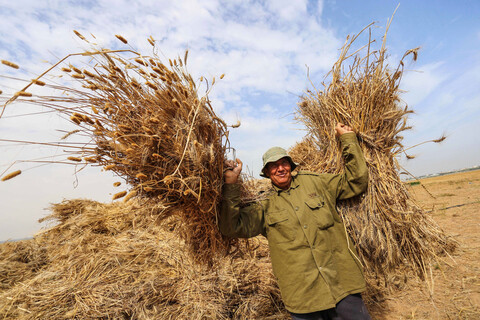The Electronic Intifada 2 November 2019

A child plays during a rainstorm in an impoverished neighborhood of Beit Lahiya, northern Gaza, on 26 October.
ActiveStillsThree Palestinians in the occupied West Bank and Gaza Strip died by Israeli fire during October.
Alaa Nizar Ayyash Hamdan, 28, died after he was hit with live fire to the chest during Great March of Return protests in northern Gaza on 4 October.
Three days later, Fadi Usama Ramadan Hijazi, 21, succumbed to injuries sustained when an Israeli sniper shot him during protests in northern Gaza earlier in the year.
A total of 214 Palestinians have been killed during Great March of Return protests along Gaza’s eastern and northern perimeter with Israel since their launch on 30 March 2018. Nearly 9,500 more have been wounded by live fire during the demonstrations.
“Unlawful and immoral”
In the West Bank, 25-year-old Raed al-Bahri was shot and killed by Israeli guards as he walked toward a checkpoint near Tulkarm on 18 October.
Israel claimed that al-Bahri charged at guards with a knife before he was killed. However, eyewitnesses told the human rights group B’Tselem that al-Bahri was not carrying a knife when he was killed.
“B’Tselem’s investigation found that al-Bahri continued walking toward the guards despite warnings from a Palestinian who was nearby and calls to stop, in both Hebrew and Arabic, shouted by a guard who was standing behind a concrete block,” the rights group stated.
“The guard also fired two shots in the air. When al-Bahri was several meters from the guard, he fired at his legs. Al-Bahri fell down and, as he attempted to get up, other guards fired another eight to 10 shots at him.”
B’Tselem added that the use of lethal force against al-Bahri “as he lay on the ground was unlawful and immoral.”
Israel is holding al-Bahri’s body, preventing his family from burying him.
No Israelis were injured during the incident, as has been the case in so many alleged attacks in which a Palestinian was killed or seriously injured.
Critical injuries
A Palestinian woman was critically injured by paramilitary Border Police in Hebron on 30 October after she allegedly attempted to stab soldiers, none of whom were injured.
Days earlier, a 16-year-old Palestinian boy in Jerusalem was shot and moderately wounded in what Israeli media described as a “failed” attempt to stab Border Police.
On 17 October, Israeli occupation forces disguised as civilians shot and seriously wounded Firas al-Halaq, 26, during a raid on al-Amari refugee camp near the West Bank city of Ramallah.
Israel initially claimed that al-Halaq had rammed an unmarked police vehicle with his car and was holding a knife.
Al-Halaq was hospitalized under restraint and guard but released from detention after a week without explanation from police, which omitted mention of a knife in an updated statement.
The wounded Palestinian, a citizen of Israel, said he was driving while intoxicated and was not intending to attack police, nor was he carrying a knife.
Ninety-three Palestinians have died by Israeli fire so far this year.
Ten Israelis died as a result of Palestinian attacks during the same period. However, Israeli prosecutors are walking back the attribution of nationalist motives to the February rape and murder of 19-year-old Ori Ansbacher.
Also during the month, occupation forces fired tear gas in the Israeli-controlled H2 area of Hebron. Seventy Palestinians, including 28 children, were hospitalized for tear gas inhalation injuries.
Home demolitions
Israeli forces punitively demolished a three-story residential building under construction in al-Amari refugee camp on 24 October. The home belongs to the family of a Palestinian imprisoned over the killing of a soldier during a raid on the camp in May 2018.
“Since the beginning of 2019, seven homes have been demolished on punitive grounds, compared to six in 2018 and nine in 2017,” the UN monitoring group OCHA stated.
The group noted a spike in Israeli demolitions of Palestinian homes overall, with nearly 550 Palestinians displaced by the end of September, exceeding the total number displaced in all of 2018.
“Over one-quarter of this year’s demolitions in East Jerusalem (52 of 178 structures) were carried out by the Palestinian owners, mainly to avoid paying the municipality for the cost of the demolition,” OCHA said.
Meanwhile, settler violence disrupted the annual olive harvest throughout the West Bank. Settlers assaulted at least two Palestinian farmers, some 1,200 olive trees damaged and several tons of produce were stolen during the month.
The olive harvest was also disrupted by tightened restrictions on Palestinian movement during Jewish holidays, as occupation authorities “postponed the opening of the West Bank barrier gates in Tulkarm and Jenin,” OCHA stated.
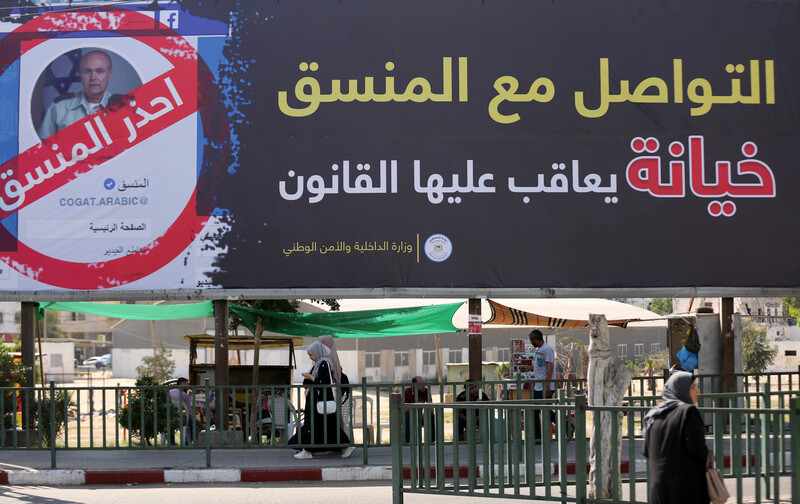
A billboard in Gaza City warns Palestinians against communicating with COGAT, the bureaucratic arm of Israel’s military occupation, on 9 October. COGAT is tasked with deciding which Palestinians receive permits to access life-saving medical treatment outside Gaza and plays a central role in Israel’s complete system of control while posing as a humanitarian agency on social media.
APA images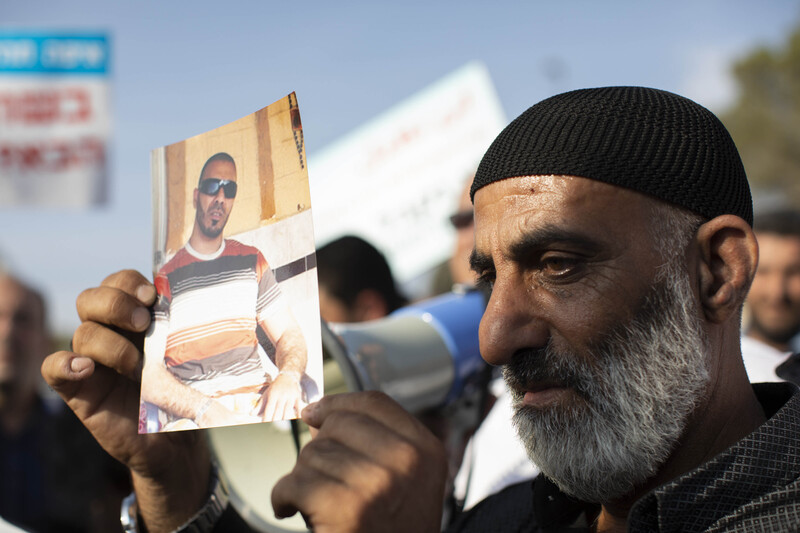
A Palestinian citizen of Israel holds a photo of his son who was shot by criminals during a demonstration against violence outside the prime minister’s offices in Jerusalem on 10 October.
ActiveStills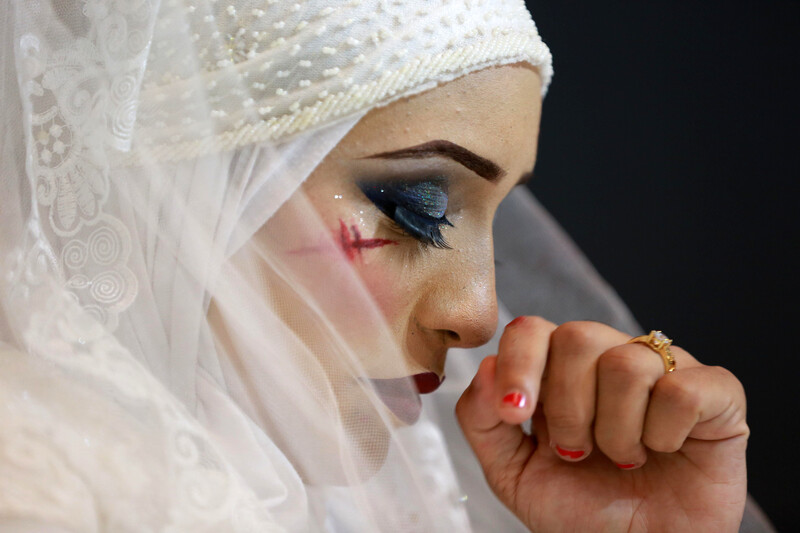
A Palestinian woman participates in an event against violence towards women in Gaza City on 10 October.
APA images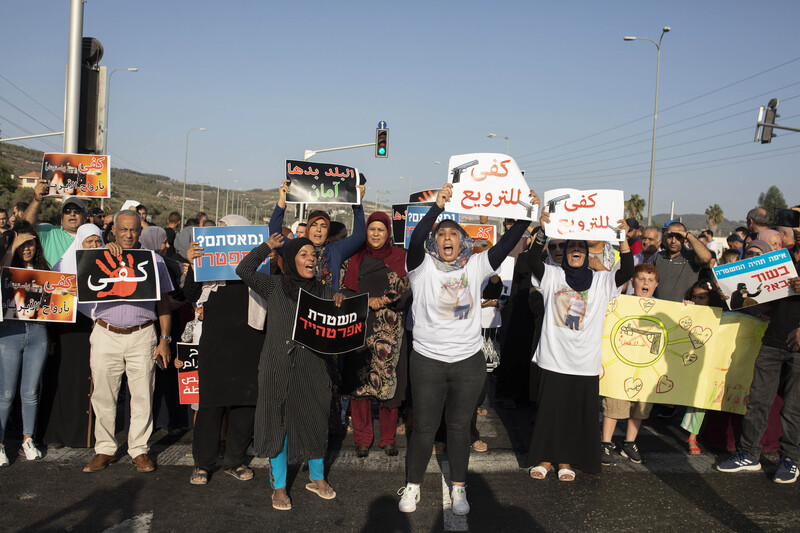
Palestinians in Israel block a highway in Wadi Ara near Haifa during a demonstration against violence, organized crime and recent killings among Palestinian communities inside Israel on 13 October. By the month’s end, 70 Palestinians in Israel had been murdered since the beginning of the year.
ActiveStills
Palestinians participate in Great March of Return protests along the boundary with Israel east of Khan Younis, southern Gaza, on 25 October.
APA images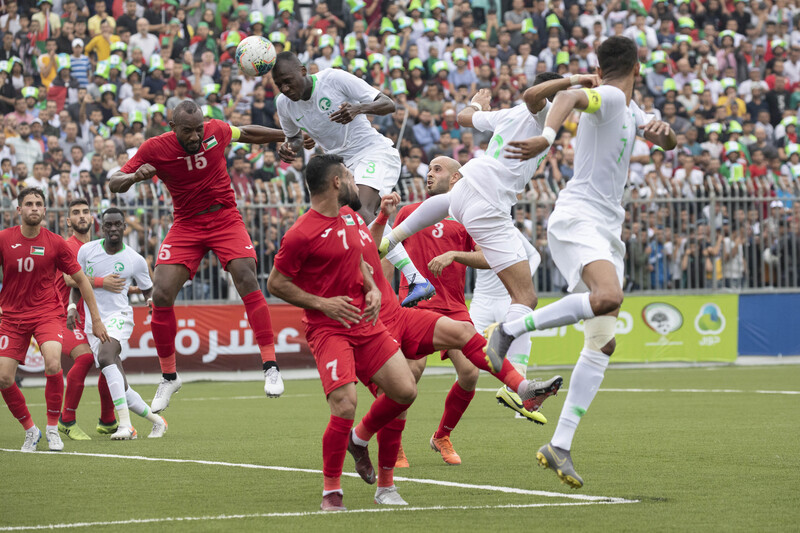
The national teams of Saudi Arabia and Palestine compete during a World Cup 2022 Asian qualifying match in the West Bank town of al-Ram on 15 October. Many Palestinians and their supporters opposed the Saudi decision to play in the West Bank for the first time since Saudi players cannot enter Palestinian territory without Israeli permission, thus normalizing the military occupation.
ActiveStills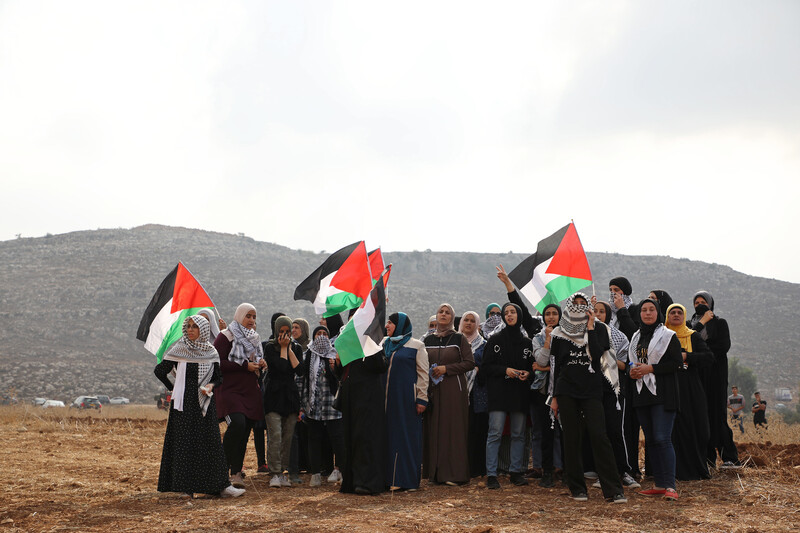
Palestinians demonstrate against a new settlement outpost next to the village of Turmusaya in the central West Bank on 17 October.
ActiveStills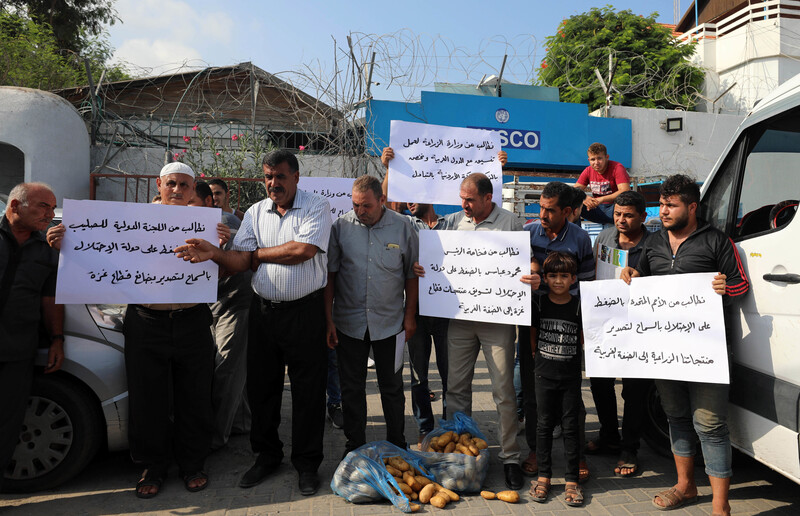
Palestinian farmers in Gaza City protest against Israel’s ban on exports from Gaza to the West Bank on 17 October.
APA images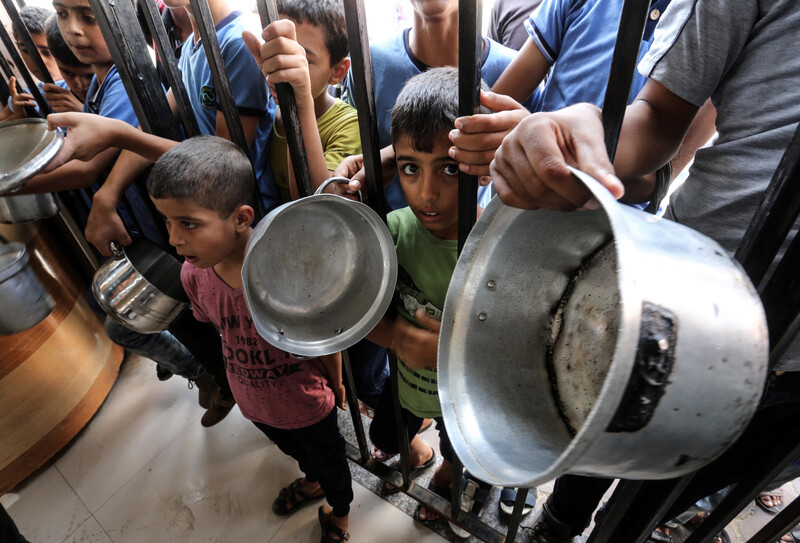
Palestinians wait to receive food aid in Gaza City on 17 October.
APA images
Palestinian Authority leader Mahmoud Abbas meets with Saudi Crown Prince Mohammed bin Salman in Riyadh on 17 October.
APA images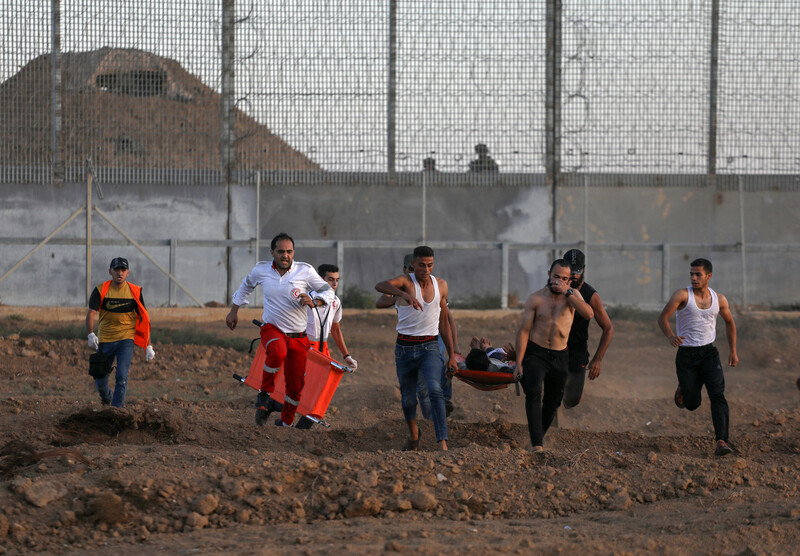
An injured protester is evacuated during Great March of Return demonstrations in eastern Gaza on 18 October.
ActiveStills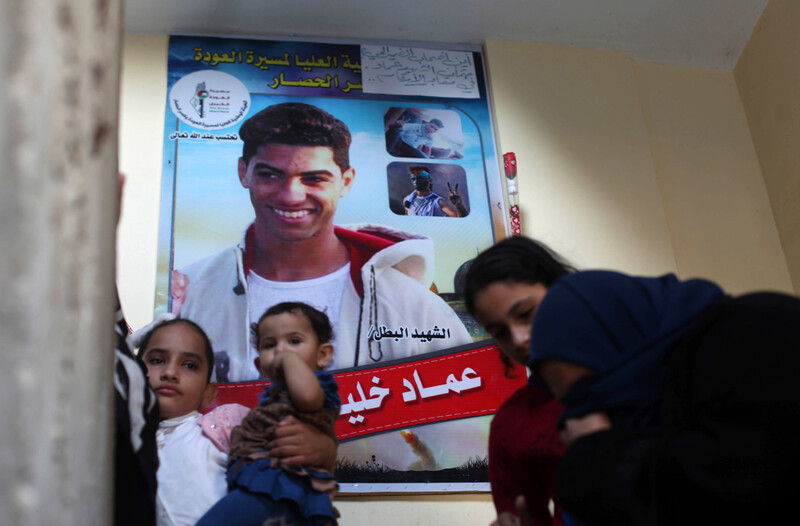
Palestinians mourn during the 23 October funeral of Imad Shaheen in Nuseirat refugee camp, central Gaza Strip after his was body was released by Israel. Shaheen, 17, was shot by Israeli forces early November last year while allegedly attempting to cross the Gaza-Israel boundary. The teen was arrested and taken to an Israeli hospital, where he died the following day. Israel had held his body for nearly a year.
APA images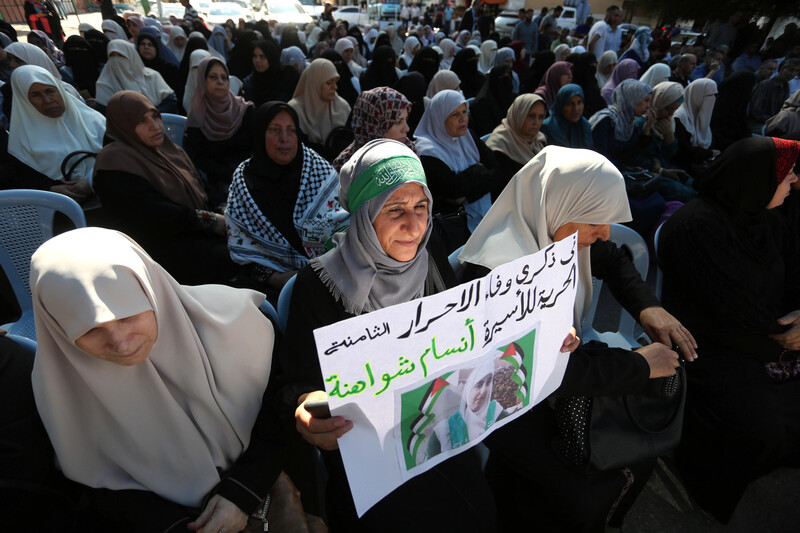
Palestinians protest in front of the Red Cross offices in Gaza City in solidarity with prisoners in Israeli jails, 21 October.
APA images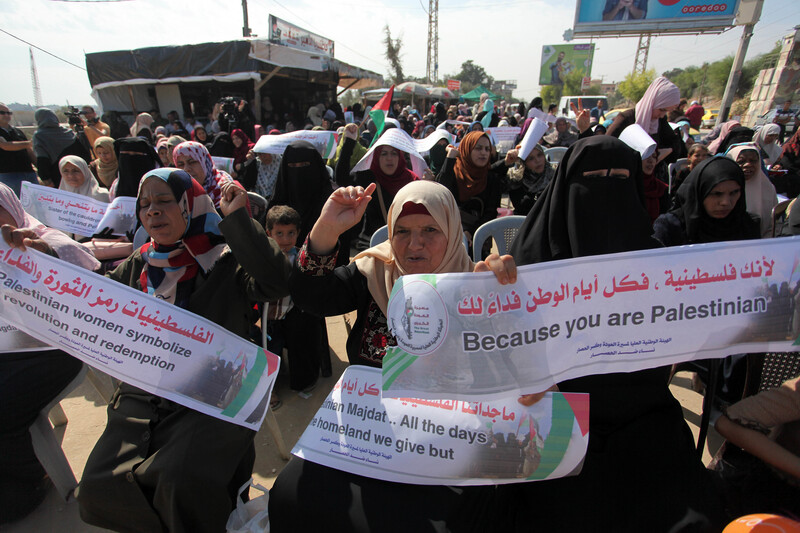
Palestinian women protest against Israel’s blockade of the Gaza Strip at Erez checkpoint on the northern Gaza-Israel boundary on 22 October.
APA images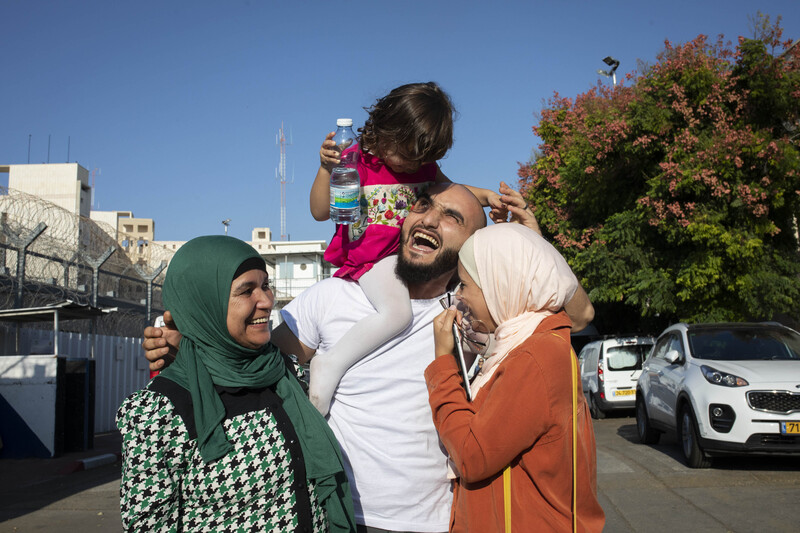
Palestinian journalist Mustafa al-Kharouf meets his family outside Givon prison in Ramle, central Israel, upon his release from nine months of imprisonment on 24 October. Israel tried to deport al-Kharouf to Jordan even though his father is a resident of Jerusalem and he has lived in the city since he was 12 and is married to a Jerusalem resident.
ActiveStills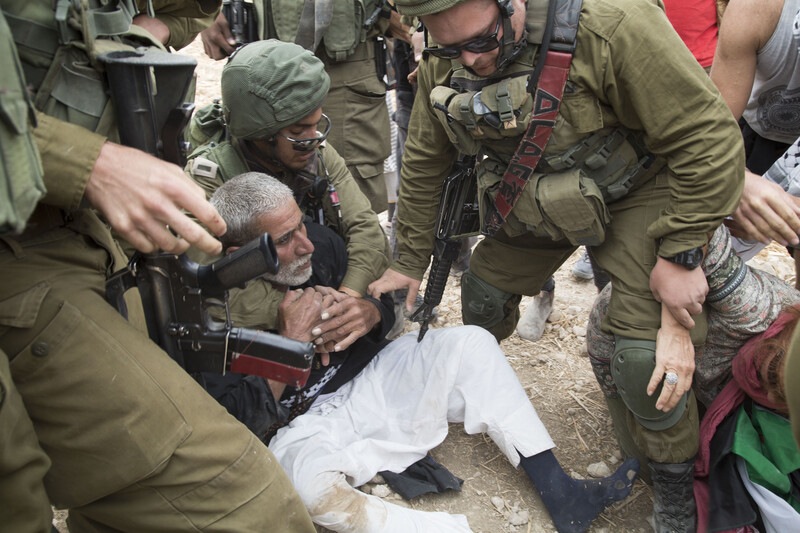
Israeli soldiers detain a Palestinian man during a direct action protest at an Israeli settlement outpost in the West Bank’s Jordan Valley on 26 October.
ActiveStills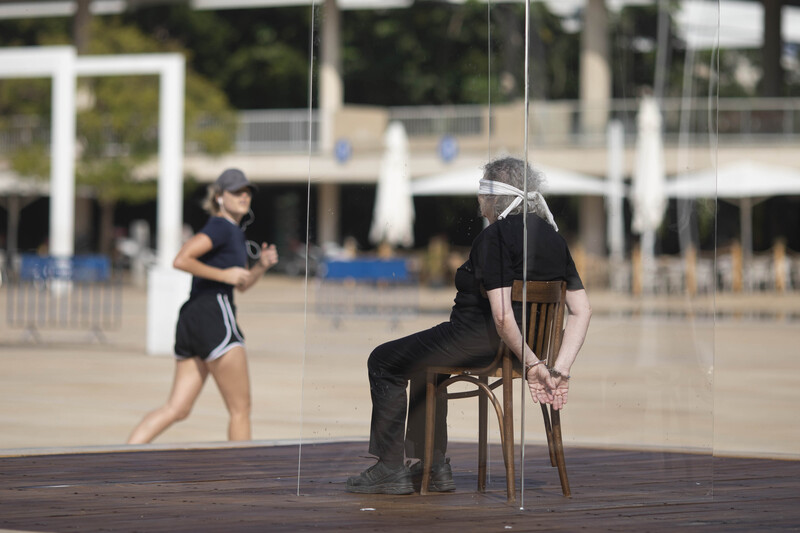
An Israeli activist takes part in a 30-hour-long vigil in central Tel Aviv city on 27 October calling for the release of Hiba al-Labadi, a Jordanian woman held by Israel without charge or trial after being arrested at Allenby crossing in August. Activists were blindfolded and cuffed to a chair as was al-Labadi during interrogation by Israel.
ActiveStills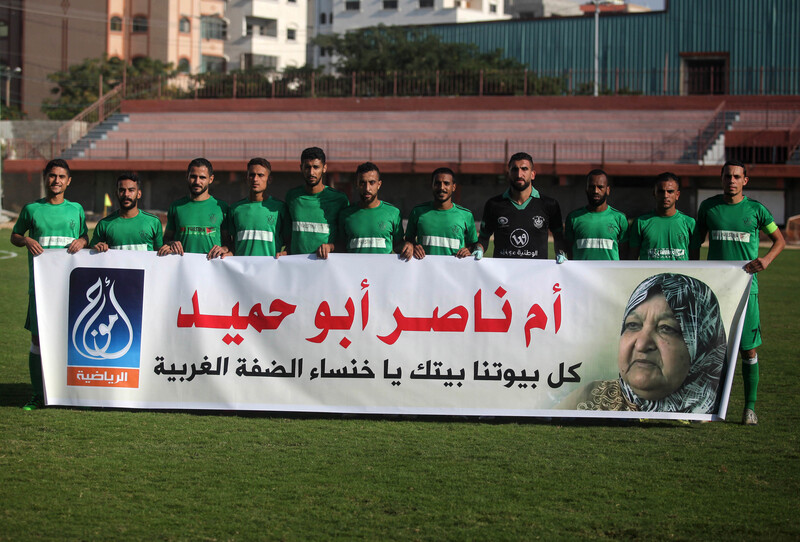
Palestinian football players hold a banner in solidarity with Latifa Abu Humaid during a match in Gaza City on 27 October after the woman’s under-construction home was destroyed in a revenge demolition by Israel. The home was being built to replace one destroyed last year after a member of the family was arrested for dropping a slab on an Israeli soldier during an arrest raid last year, causing him fatal injuries.
APA images
At center, Hamas politburo chief Ismail Haniyeh meets with Yahya Sinwar (right), leader of Hamas in Gaza, and Hanna Nasser, chair of the Palestinian Central Elections Commission, in Gaza City on 28 October. Hamas, which controls internal affairs in Gaza, said that it was ready to hold elections, which have not been held since the resistance group’s surprise legislative victory in 2006.
APA images


